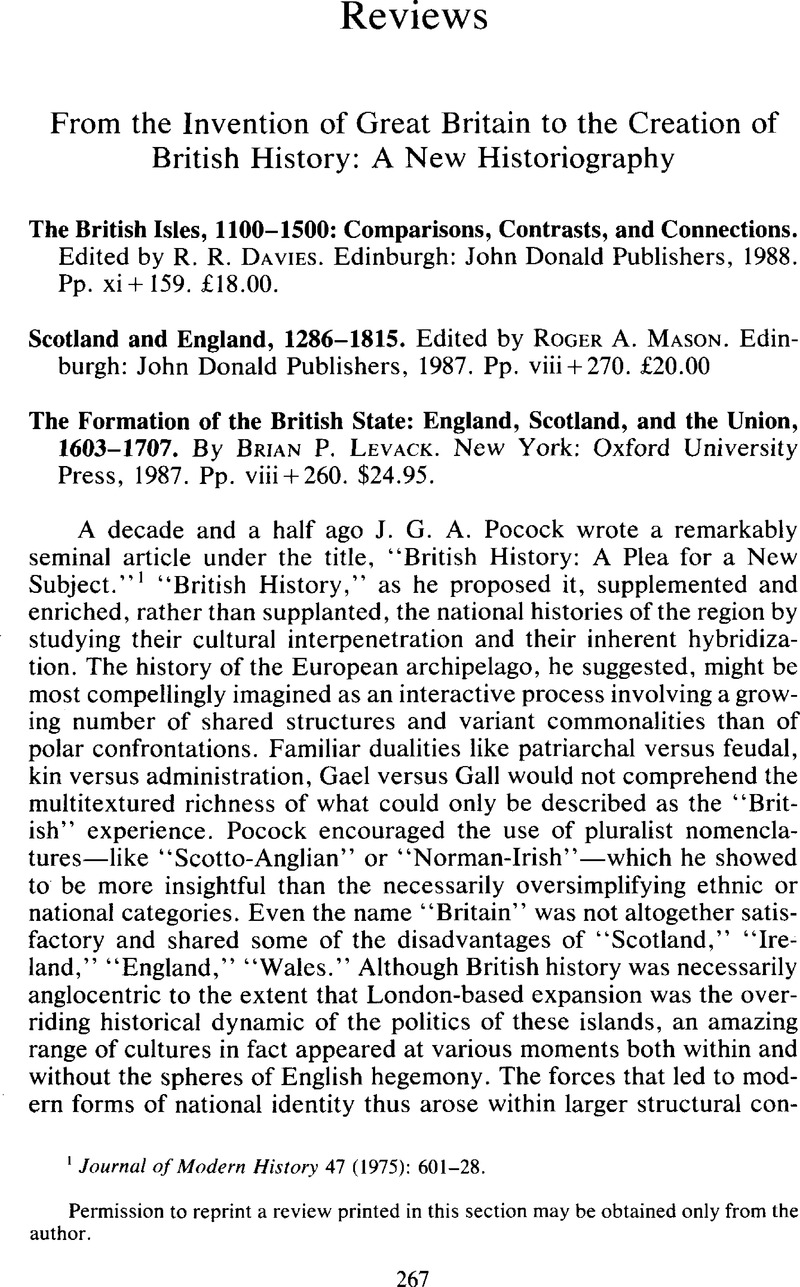Published online by Cambridge University Press: 10 January 2014

Permission to reprint a review printed in this section may be obtained only from the author.
1 Journal of Modern History 47 (1975): 601–28CrossRefGoogle Scholar.
2 Barrow, G. W. S., Feudal Britain, 1066–1314 (London, 1956)Google Scholar; see also his discussion of the medieval usage of the name “Scotland” in “The Highlands in the Lifetime of Robert the Bruce,” in his The Kingdom of the Scots (New York, 1973), pp. 362–83Google Scholar.
3 Grant, Alexander, Independence and Nationhood: Scotland, 1306–1469 (London, 1984), pp. 200–220Google Scholar.
4 Barrow, “Highlands in the Lifetime of Robert the Bruce.”
5 Dawson, Jane, “The Fifth Earl of Argyle, Gaelic Lordship and Political Power in Sixteenth-Century Scotland,” Scottish Historical Review 67 (1988): 1–27Google Scholar.
6 See my “Scotland, Antichrist, and the Invention of Great Britain,” in New Perspectives on the Politics and Culture of Early Modern Scotland (Edinburgh, 1982), pp. 34–58Google Scholar, and, more generally, Scottish National Consciousness in the Age of James VI: the Apocalypse, the Union, and the Shaping of Scotland's Public Culture (Edinburgh, 1979Google Scholar).
7 SirFortescue, John, De laudibus legum Anglie, trans. Chrimes, S. B. (Cambridge, 1949), pp. 32–33Google Scholar, chap. 13, lines 13–18: “Sic namque regnum Anglie quod ex Bruti comitiva troianorum quam ex Italie et Grecorum finibus perduxit, in dominum politicum et regale. Sic et Scotia quod ei quondam ut ducatus obedivit, in regnum crevit politicum et regale.”
8 Calderwood, David, ed. The History of the Kirk of Scotland (Edinburgh, 1845), 6:523Google Scholar.
9 For a further discussion of these themes, see my “The Jewish Dimension of the Scottish Apocalypse: Climate, Covenant, and World Renewal,” in Menasseh Ben Israel and His World, ed. Kaplan, Y. and Popkin, R. H. (Leiden, 1989), pp. 7–30Google Scholar.